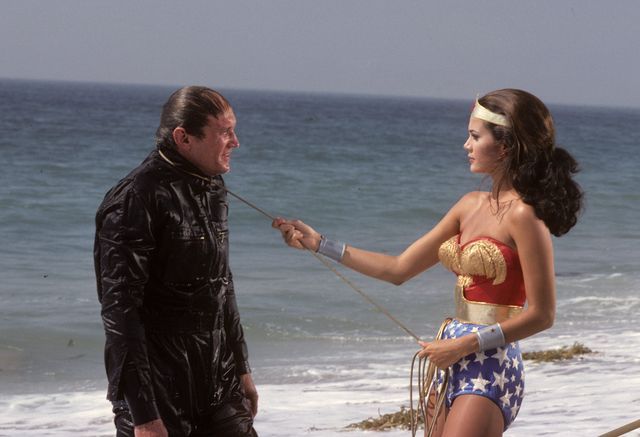
2016 hasn't been kind to Wonder Woman, especially considering it's her 75th birthday.
In March she made her big screen debut in a critically panned slugfest. Then she was awarded an honorary United Nations' ambassadorship for women and girls, only to have it revoked two months into the planned 12-month campaign. On the comics side, the critically acclaimed “Legend of Wonder Woman” series was canceled and artist Frank Cho threw a public fit when he couldn't draw Wonder Woman's underwear on a comic book cover.
Advertisement
In the wake of this no good, very bad year, it's worth remembering there's a secret history behind Wonder Woman, one that only a few storytellers are willing to commemorate. Her creator, William Moulton Marston, saw "Wonder Woman" comics as an educational opportunity to teach readers about his beliefs, controversial both at the time and today. Much has been previously written on this, but writer Jill Lepore pulled all the pieces together in her 2014 book “The Secret History of Wonder Woman.” Marston had three main fixations he baked into Wonder Woman's DNA: the detection of lies, a matriarchal uprising and sexualized bondage.

Tell Me Lies, Tell Me Sweet Little Lies
Marston is widely acknowledged as inventing the systolic blood pressure test that was eventually developed into the lie detector. The gadget he put together wasn't much more than a stethoscope and a blood pressure cuff, which is fairly basic compared to the digital polygraphs forensic psychophysiologists utilize today. They operate on the same principle, though: that being deceptive produces anxiety, leading to physical changes in the human body's blood pressure, heart rate, respiration and conductivity. But there's evidence that it wasn't Marston who first came up with this idea. Instead, his wife Elizabeth Holloway was the one who suggested it after she noticed her blood pressure increase while she was upset. Regardless, the lie detector's accuracy is as debatable now as it was in 1922 when Marston tried to introduce it in court cases. So Marston turned to fiction instead and created Wonder Woman's golden “Lasso of Truth” that forces those in its thrall to reveal their deceptions.
The Future is Female
In addition to marrying Holloway, Marston also partnered with his former student Olive Byrne. The three lived together in polyamory, with Marston fathering children with both women. Byrne's aunt was feminist Margaret Sanger, whose philosophies influenced Marston. He had already supported women's rights in the Harvard Men's League for Women's Suffrage, but Marston also worked as a lab assistant under Harvard psychologist Hugo Münsterberg, who was known to oppose the right to vote for women. This confluence led Marston to believe that women were superior to men and would eventually run the world because they were more trustworthy and less aggressive than men. In a 1943 essay, Marston wrote:
Marston's solution was the creation of Wonder Woman, and he drew inspiration from Münsterberg when creating the villain Dr. Psycho. Wonder Woman's ancestral home of Paradise Island (renamed Themyscira in 1987), a female-dominated society run by Amazons, drew on ancient Greek myth.

All Tied Up
Remember Marston's interest in the suffrage movement? A crucial spark toward that influence came when he witnessed suffragists chain themselves to a fence in protest. Chains were used symbolically within this movement to signify women's emancipation from enslavement. This led to an ongoing theme in "Wonder Woman" where she was constantly chained up by her enemies, Marston's allegory for female liberation through birth control. Sanger herself published a collection of letters from women titled “Motherhood in Bondage,” describing the lack of birth control as akin to slavery.
To be fair, while Marston may have worked themes like this into his Wonder Woman stories, there's still evidence that he suppressed his first wife's career, while taking credit for her ideas. Hopefully this will be explored more in the upcoming biopic, “Professor Marston And The Wonder Women.” If not, we've always got Gal Godot's second outing as the princess of the Amazons as an opportunity to explore Marston's genesis for the heroine. Here's hoping her 76th year treats her better than this one did.
Advertisement
